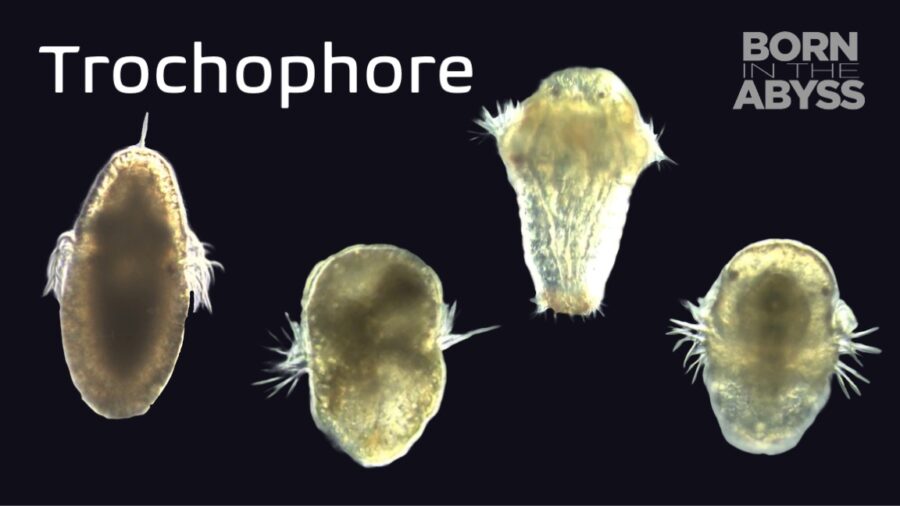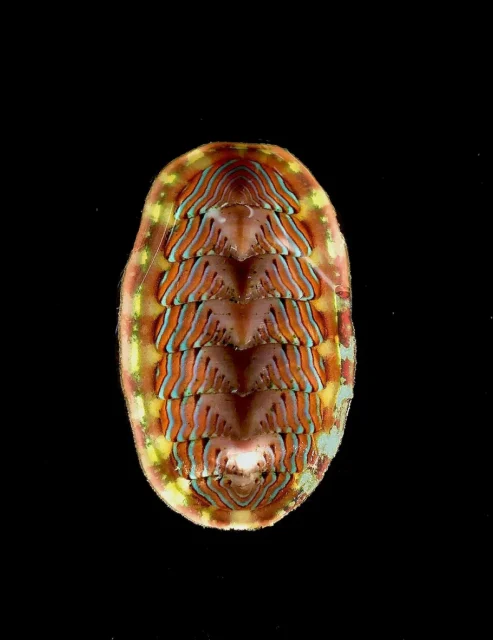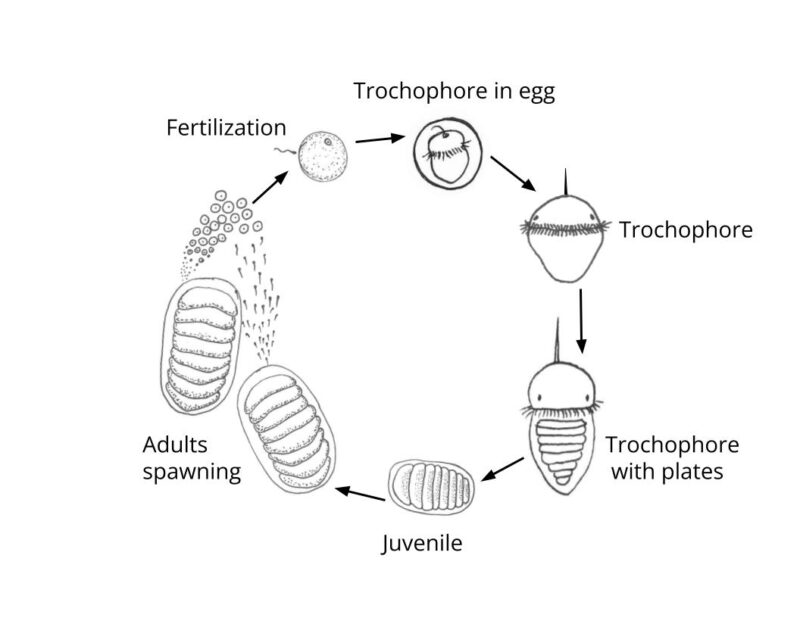
Trochophore
Plural: Trochophores
From the Greek words "trochós," which means "wheel," and "pherein," which means "to carry"
Parents: Many molluscs and annelid worms
Food: Microscopic algae called phytoplankton
Size: About 300 microns tall = 0.3 millimeters = 0.01 inches

Photo of an adult chiton by McKenna Hainey
Larval Form and Function
Watch this compilation video to learn more about the movement, anatomy, and feeding of the trochophore larva.
Life Cycle of a Chiton

Drawn by Nadia Stoker
- The trochophore larval form is among the most common and is observed in the lifecycles of a wide variety of molluscs and annelids (marine worms).
- Adults are either male, female, or both (hermaphrodites)
- Eggs and sperm are usually spawned into the seawater, where fertilization occurs, though some molluscs have internal fertilization and develop through the trochophore stage inside an egg capsule.
- Trochophore larvae generally last for hours to weeks before transitioning into the next stage of development.
- Adult chitons, like the ones shown in the above life cycle, all have eight shell plates visible in their late-stage trochophore larvae.
Larval Quest Activity
Developed by Nadia Stoker and Caitlin Plowman as outreach and education materials accompanying the Born in the Abyss film.
The Stephen Low Company
Oregon Institute of Marine Biology, University of Oregon
National Science Foundation

